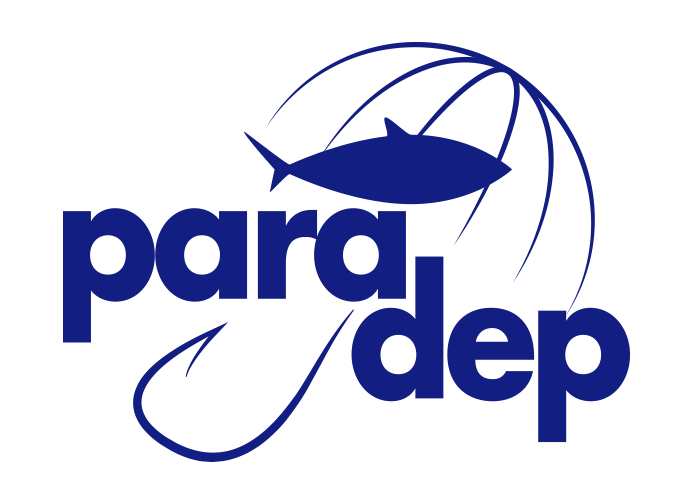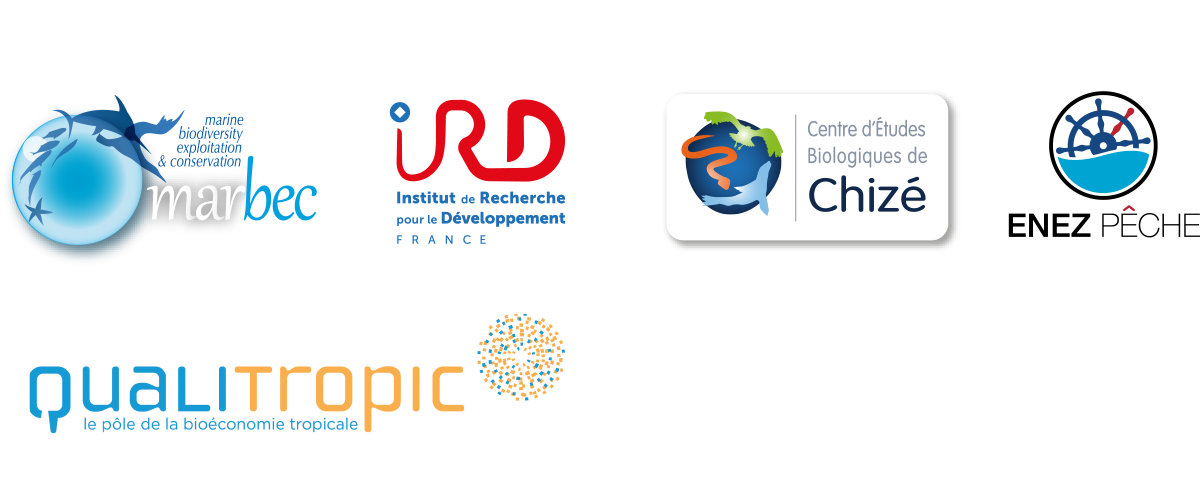Depredation in marine ecosystems is defined as the damage or removal of fish or bait from fishing gear by predators. Depredation raises concerns about the conservation of species involved, fisheries yield and profitability, and reference points based on stock assessment of depredated species. Therefore, the development of accurate indicators to assess the impact of depredation is needed. Both the Reunion Island and the Seychelles archipelago pelagic longline fisheries targeting swordfish (Xiphias gladius) and tuna (Thunnus spp.) are affected by depredation from toothed whales and pelagic sharks. In this study, we used fishery data collected between 2004 and 2015 to propose depredation indicators and to assess depredation levels in both fisheries. For both fisheries, the interaction rate (depredation occurrence) was significantly higher for shark compared to toothed whale depredation. However, when depredation occurred, toothed whale depredation impact was significantly higher than shark depredation impact, with higher depredation per unit effort (number of fish depredated per 1000 hooks) and damage rate (proportion of fish depredated per depredated set). The gross depredation rate in the Seychelles was 18.3%. A slight increase of the gross depredation rate was observed for the Reunion Island longline fleet from 2011 (4.1% in 2007±2010 and 4.4% in 2011±2015). Economic losses due to depredation were estimated by using these indicators and published official statistics. A loss of 0.09 EUR/hook due to depredation was estimated for the Reunion Island longline fleet, and 0.86 EUR/hook for the Seychelles. These results suggest a southward decreasing toothed whale and shark depredation gradient in the southwest Indian Ocean. Seychelles depredation levels are among the highest observed in the world revealing this area as a ªhotspotº of interaction between pelagic longline fisheries and toothed whales. This study also highlights the need for a set of depredation indicators to allow for a global comparison of depredation rates among various fishing grounds worldwide.
Depredation is defined as the damage or removal of fish from fishing gear by predators, and is a crucial issue leading to negative impacts on both animals involved in depredation and fisheries. Depredation in longline pelagic fisheries targeting swordfish (Xiphias gladius) and tuna (Thunnus spp.) involves short-finned pilot whales (Globicephala macrorhynchus), false killer whales (Pseudorca crassidens) and some pelagic sharks. Since no long-term solution could be found to date, we investigated fishing gear improvement by deploying a technology designed to physically protect the hooked fish by hiding it to predators: the DMD (depredation mitigation device). Two types of DMDs were designed: “spiders” and “socks”. The efficiency of “spiders” was tested in November 2007 during a fishing trial of 26 longline fishing operations when 12,480 hooks and 1970 devices were set. The efficiency of “socks” was tested in October 2008 during a fishing trial of 32 longline fishing operations when 13,220 hooks and 339 devices were set. 117 and 24 fish were hooked on branchlines equipped with spiders and socks, respectively and among those devices, 87.3% versus 69.2% were correctly triggered and 80% versus 15% of the fish were correctly protected. A low entanglement rate of the spiders with the fishing gear was found (3.6%), but a higher one was associated to the socks (17.8%). Operational constraints to routinely deploy “spiders” were examined. The number of sets impacted by shark depredation was significantly greater than the number of sets involving toothed whale depredation. However, when depredation occurred, the proportion of fish damaged by toothed whales was significantly greater. While more trials should be carried out to deeply verify the efficiency of DMDs, we remain convinced that considerations of fishing gear technologies might be more actively investigated to propose innovative measures to mitigate toothed whale depredation in pelagic longlining. For this type of gear, innovative technology is an important issue of the ecosystem approach to fisheries (EAF) framework.


